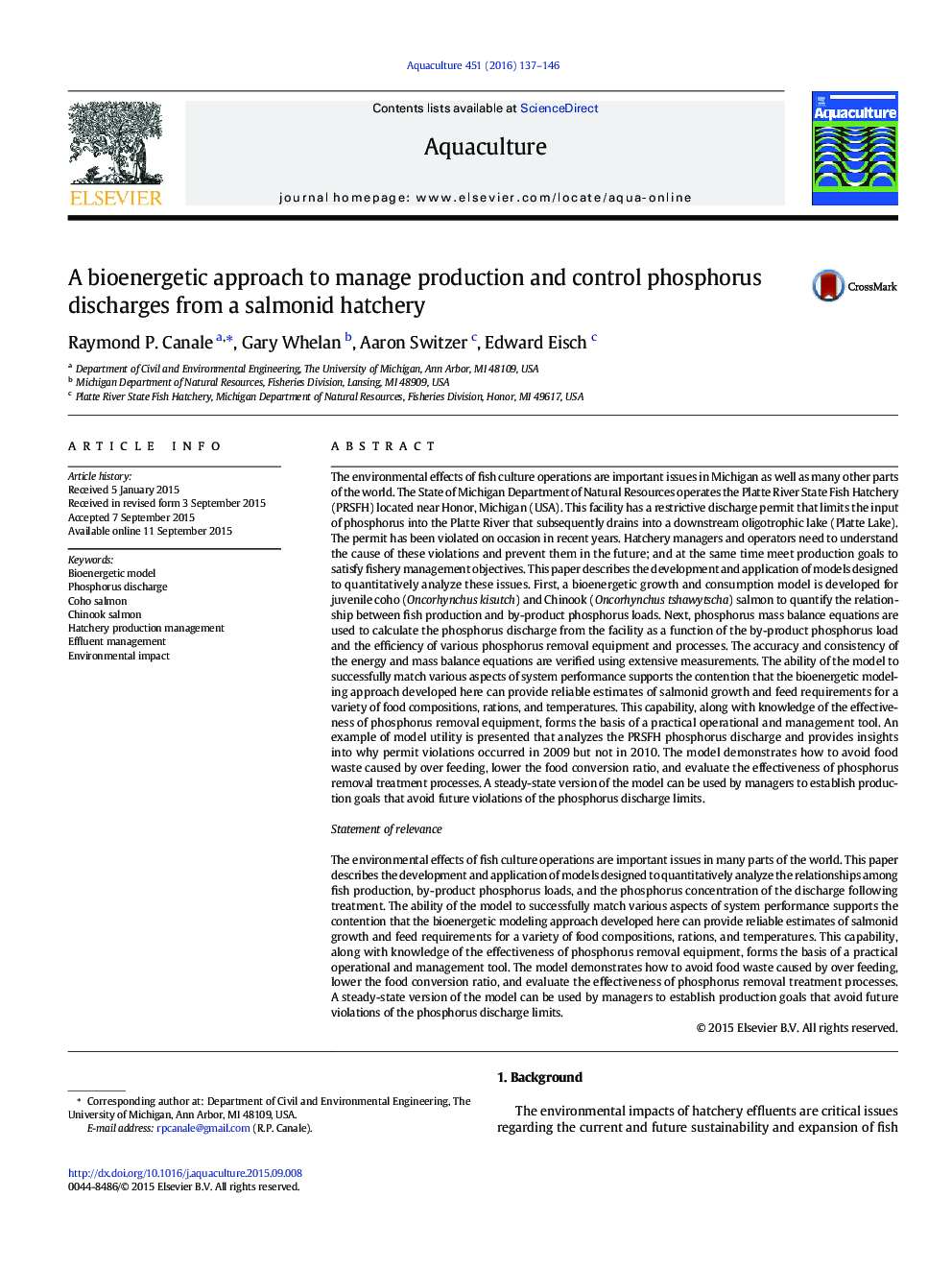| Article ID | Journal | Published Year | Pages | File Type |
|---|---|---|---|---|
| 8494209 | Aquaculture | 2016 | 10 Pages |
Abstract
The environmental effects of fish culture operations are important issues in many parts of the world. This paper describes the development and application of models designed to quantitatively analyze the relationships among fish production, by-product phosphorus loads, and the phosphorus concentration of the discharge following treatment. The ability of the model to successfully match various aspects of system performance supports the contention that the bioenergetic modeling approach developed here can provide reliable estimates of salmonid growth and feed requirements for a variety of food compositions, rations, and temperatures. This capability, along with knowledge of the effectiveness of phosphorus removal equipment, forms the basis of a practical operational and management tool. The model demonstrates how to avoid food waste caused by over feeding, lower the food conversion ratio, and evaluate the effectiveness of phosphorus removal treatment processes. A steady-state version of the model can be used by managers to establish production goals that avoid future violations of the phosphorus discharge limits.
Related Topics
Life Sciences
Agricultural and Biological Sciences
Aquatic Science
Authors
Raymond P. Canale, Gary Whelan, Aaron Switzer, Edward Eisch,
